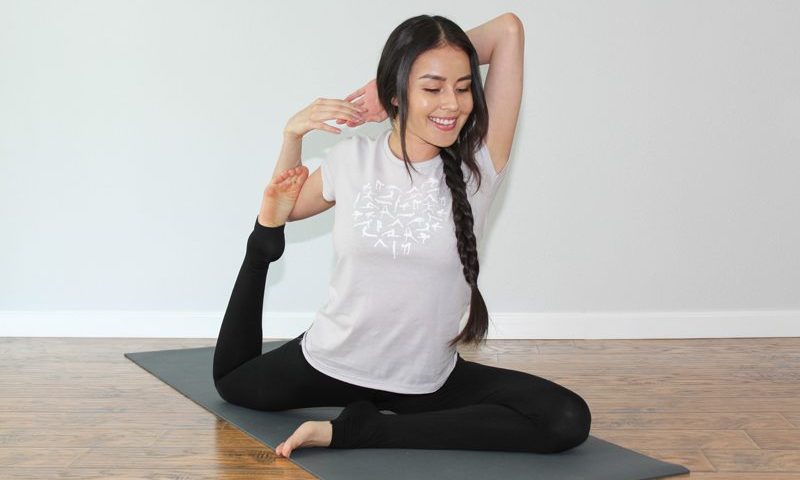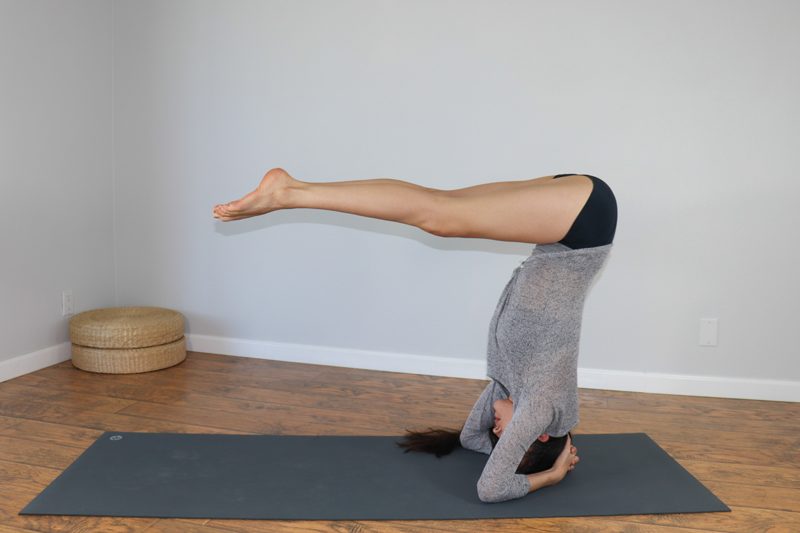
How to Keep Your Knees Safe During Yoga
24th January 2019
What is Raja Yoga?
31st January 2019How does the time of the day affect your yoga practice?

Yoga has always been closely associated with the passing times of the day and the movements of the sun and moon. Traditionally, the Sun Salutations sequence should be practised at sunrise, while more restorative asanas should be used at sunset. To decide when to practice, you must consider the goal of your yoga. If you want to relax your body and turn inward, evening practice may be best. If you want to rejuvenate and refresh your mind, practice in the morning. If you’ve got time, try heading to the studio before work. Pack your clothes into a spacious yoga bag the night before to save precious time in the morning. In this article, we explore how the time of the day affects your yoga practice in more detail.
Morning
When you first wake up, your mind is in a transient state. While your head is full of tasks for the day, you’re still a little drowsy from your sleep. Practising yoga in the morning can help to clear your head ready for the day ahead. Instead of having a million thoughts flying around, you can unclutter your mind and focus on what matters most. This way, you’ll start the day feeling calm and in control.
As well as clearing the mind, morning yoga can also reset your physical body. During the night, toxins start to build up in the body. Yoga can be used to release these and get the circulation, blood, and oxygen moving again. Pranayama practices like Bhastrika or Kappalabhati can be used to energise the body and clear the sinuses. Nadi Shodana, or Alternate Nostril Breathing, is a great way to balance the mind and create a state of relaxed focus. If you feel sluggish after waking, try using the Sun Salutations sequence. This will help to energise the body and boost circulation.
Mid-morning
By mid-morning, it’s not unusual to feel tired, heavy, or even lethargic. With this in mind, a longer practice is ideal if time permits. Depending on your energy level, you may be drawn towards the slower paced sequences. However, it’s import to use a sequence that requires a little stamina and endurance. Although this may feel difficult at the time, you should feel better for it by the end!
Be careful not to get stuck in a rut when it comes to mid-morning practice. Although routine is key, experiment with different types of practice instead of sticking to just one. Not only will this keep things interesting, but it will also have the most effective results.
Lunchtime
Yogic texts explain that good digestion is key to health and wellbeing. You can have the healthiest diet on the planet, but if your digestive system isn’t working properly you’ll still feel rough. To absorb the nutrients, your digestive system must be working effectively.
Practising yoga before lunch is a great way to ‘fire up’ your digestive system. Pairing a twist or backbend with a pose that activates the core will help your system to absorb the vitamins and minerals in your food. Surya Bhedana or ‘right channel activation’ can also be beneficial. This exercise requires you to breathe through your right nostril to activate the Pingala Nadi. This subtle channel runs through the body and is linked to digestion; because of this, Surya Bhedana can enhance digestive power.
Lunchtime yoga can also be used to increase awareness. During a busy day, you may be tempted to eat at your desk or skip lunch altogether. However, avoid this as much as possible! For healthy digestion, you need time to relax whilst eating. If this isn’t feasible, be sure to take a few deep breathes before eating, instead.

Afternoon
Many of us are well aquatinted with the ‘mid-afternoon-slump’. In many cultures, it’s normal to rest and re-set after lunch. If napping isn’t an option, try to squeeze in 10 minutes of yoga instead. Research shows that our circadian rhythms take a natural dip in the afternoon. During this time, resting or taking a nap can increase brain power, wellbeing, and physical agility.
Yoga Nidra is the best style to use in the afternoon. When used correctly, it can help the body to relax and restore, and the mind to move into a new state. This will allow you to tackle the rest of the day with focus, energy, and enthusiasm.
Evening
If you’ve spent all day at your desk, the evening is the perfect time for a movement-based yoga sequence. Practising straight after work can create a separation between work time and leisure time. The type of practice you use is up to you. For best results, choose something that requires focus and engages the mind, but doesn’t feel like ‘work’. This way, you’ve got something to look forward to after a long day at the office.
Instead of doing the same practice out of habit, consider how you feel before you begin. If you’re exhausted after a busy day, enjoy a slow Hatha sequence to help you relax. If you’re feeling a little worked up, try a Mixed Movement or Vinyasa class to release built-up tension.
Night time
Certain types of yoga are ideal to practice at night time. If your mind is racing from a hectic day at the office, use a relaxing Pranayama sequence to prepare the mind for bed. Something as simple as slow, abdominal breathing can work wonders, particularly if you use it regularly. Just focussing on your breathing can settle the nervous system and help you to wind down before bed. If you need further comfort, try a restorative sequence to lull the body and mind into a deep state of relaxation.
In Summary
These guidelines should help you figure out how the time of the day affects your yoga practice; however, it’s important to remember that you know best. Listen to your body and discover what works best for you. Regardless of when you practice, it’s essential to have the right gear. To allow the body to stretch without restriction, always wear a pair of flexible yoga pants and a lightweight yoga t-shirt.

